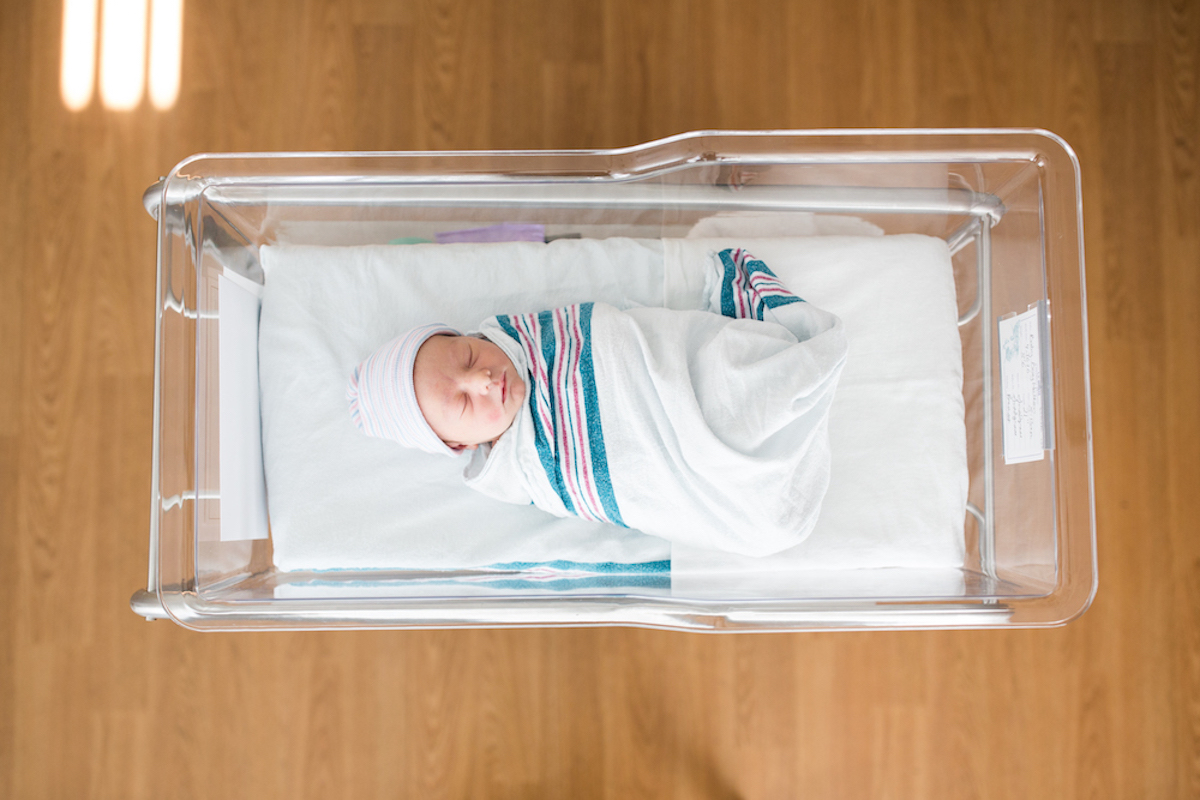Baby’s first solids! The traditional approach to this — at least in the US — generally involves rice, oatmeal or other purees of fruit and vegetables. I talk in Cribsheet about the particular order of foods, what we know about the “right” order (not much) and so on. But I also talk there about “Baby-Led Weaning”, and I’ve gotten a bunch of questions about this lately. So the below is an excerpt from Cribsheet on this topic. Plus, a couple of extras at the bottom which didn’t make it into the book. Enjoy!
What is baby-led weaning?
Baby-led weaning is an increasingly popular way to start your solid food adventure. In this practice, instead of introducing pureed foods and feeding the kid with a spoon, you wait until they are old enough to pick up foods on their own and then have them more or less eat what your family eats.
I used this approach with Finn. I wish I could say it was because I belatedly discovered a large evidence base suggesting it was better. In fact, it was that I could not bear the thought of revisiting the closet-full-of-purees that I had with Penelope. Baby-led weaning involves just giving your child the food you are eating. This seemed great! I was already producing that food. I was all for signing up for an easier approach that preserved my closet space.
Advocates of baby-led weaning do not typically focus on the lazy-parenting benefits. Instead, they cite benefits to your child: infants learn to regulate the amount of food they eat, leading to less incidence of overweight or obesity; they show acceptance of a wide variety of foods; and you have better family mealtime experiences.
Evidence backing these claims is, however, limited. A main issue is that the kind of parents who are likely to try this differ from those who use a more traditional feeding structure. They tend to be higher income, better educated, more likely to sit and actually have family meals, etc. These factors also relate to mealtime experience and diet quality, making it hard to separate out the role of the food introduction system.
There is one (small) randomized trial of two hundred women. The results support some of the claims about baby-led weaning, but not all. Parents reported less food fussiness, and the infants in the baby-led-weaning group were more likely to eat with their family. They were also likely to be breastfed longer, and the introduction of food was pushed later (i.e., to around six months rather than four).
On the other hand, this study did not find any differences in whether children were overweight or obese by the age of two, and they didn’t find any differences in the nutrients the children consumed or their total calorie intake. The researchers noted that this was hard to measure given the smearing around of food. The kids did eat slightly differently—the baby-led-weaning group was more likely to have meat and salt, for example—but these differences didn’t go in any systematic direction.
One of the main concerns with this approach is that it could lead to choking, if infants are unable to swallow big piece of things. The study showed that it was no more common in the baby-led-weaning group than the traditional spoon-feeding group. Choking is, however, reasonably common in all babies, and people in the study were encouraged not to introduce foods that presented significant choking hazards. A four-month-old shouldn’t have large pieces of hard fruit, baby-led weaning or not.
This study followed two hundred people; clearly, learning detailed answers to these questions would require a lot more than that. A second randomized trial — new since Cribsheet was published — used a similar sample size and reached the same set of conclusions. There was very little difference in any measured outcomes later in childhood.
Bottom line: if you do want to try baby-led weaning, there is nothing in the evidence to say it is a bad idea. If you do not, there is also nothing compelling to say you should go out and do it.
Addition 1: What to do about choking
Thinking about this issue brings up the more general question of choking, how to avoid it, and whether you need to cut grapes.
Choking is common in kids, especially young ones, for physiological reasons. As a parent, a choking child is terrifying. Many of us, at one time or another, have found ourselves jumping up and sticking our fingers down our child’s throats to pull out some food. In our case, it was kale chips. The result was a six month kale moratorium.
Choking is a common source of emergency room visits and — although this is very rare — it does cause about 40 pediatric deaths per year. This all leads to the question: how to avoid? In the case of food in particular, which foods are dangerous?
Answering our question is this 2013 paper in the journal Pediatrics which looks at pediatric emergency room visits for non-fatal choking on food, and asks which foods were responsible. Worth noting is that 40% of these visits are for children under 1, and in general as kids age they choke less. The largest culprit food is candy: hard candy accounts for 15% of cases with a known cause, and other candy is another 13%. Next up is meat (not hot dogs) and bone.
There are some notable variations by age. Fruits and vegetables (grapes?) account for a larger share of choking for children 0 to 4, whereas meat and bone are more significant causes for older kids.
A second paper looks at fatalities (very rare, again) by food cause. These authors find that in terms of fatalities the top three causes are hot dogs, candy and grapes. Hot dogs rank lower in terms of their relative injury list, but hot dog choking is more serious. Fatalities are concentrated in children under 4.
What to take from this:
- Worry more about choking for younger kids (under 4)
- For little kids cut up hot dogs a lot; also grapes
- At some point you can likely stop cutting up hot dogs and grapes, perhaps after the age of 3 or 4 (I know many pediatricians will tell me that “college” is the right time to stop cutting grapes. There is no hard and fast timing rule.)
- Hard candy isn’t a necessary or important food group and it is also a choking hazard. Best to avoid, especially for younger kids.
Addition 2: Are high chair footrests important?
Over on Instagram, in one of my weekly question times, someone asked about whether they need a high chair with a footrest. Flippantly, I replied “Nope” only to be barraged with people telling me that they thought this might be wrong, that they heard that footrests help babies eat and that definitely the $300 high chair they bought told them that.
Obviously, this deserved more research, if only to find out I messed up by going with the $14.99 Ikea Antorp (seriously, though, is that not an amazing deal? I think I like Ikea a little too much.)
Based on a read of the internet it seems the main value of the footrest is the idea that kids will eat better, fidget less, etc, if they have someplace to rest their feet. Here’s a high chair with this feature. This chair seats a baby, and then can be used all the way up through older kids.
Is this supported in the data? A dive into the research on high chairs mostly reveals studies of high chair injuries (remember to strap them in). But there is one paper which randomized a (small) number of children across different high chair types and observed both their ability to focus on non-eating tasks and (using videos) their behavior at meals. The choice of high chair types was either a standard booster seat or one of these footrest high chairs.
This study — which, I want to be clear, contains only 24 kids over two experiments — finds little difference across high chair type. Kids with a footrest are able to reach more stuff (presumably by partially standing) but it doesn’t seem to affect their ability to focus on the task they were given. It also doesn’t significantly affect their behavior at meals in the video analysis. Worth noting is that parents did want to keep the chair after the experiment, so they at least perceived some value.
Bottom line: not much to point to on footrests being important. Of course, not much to rule them out either.

















